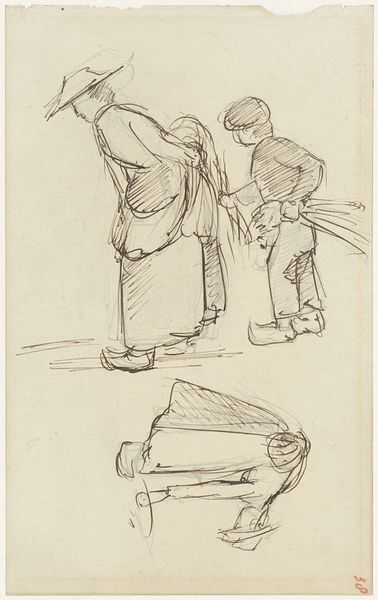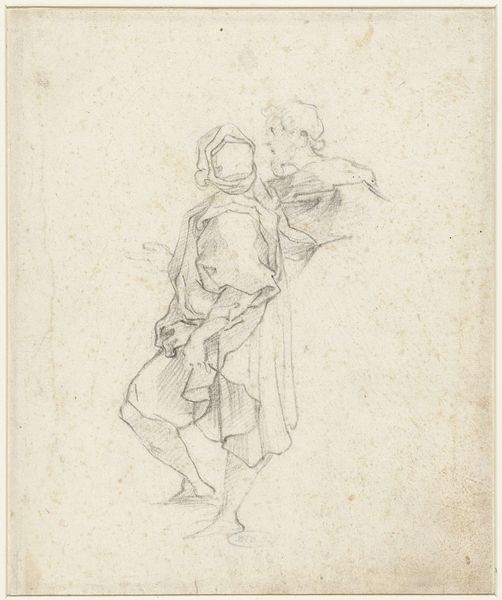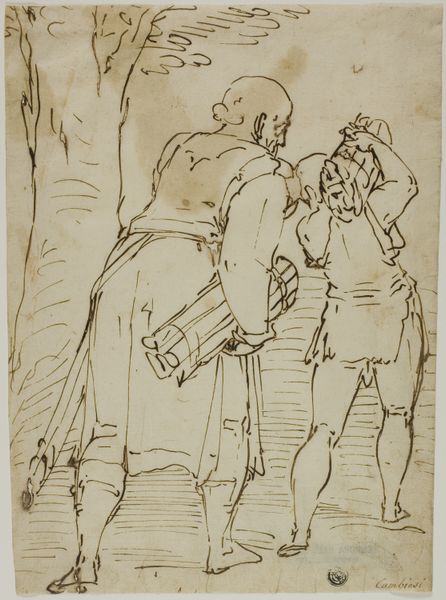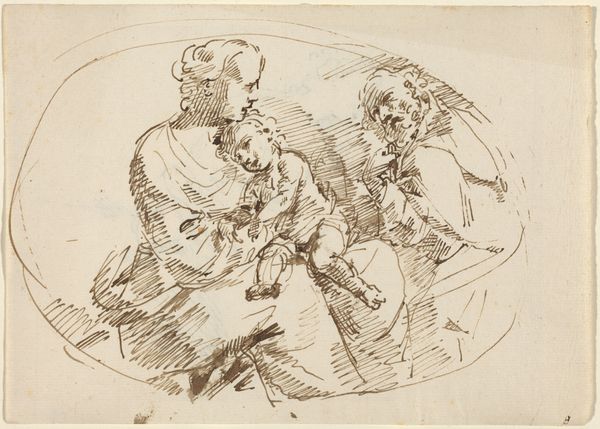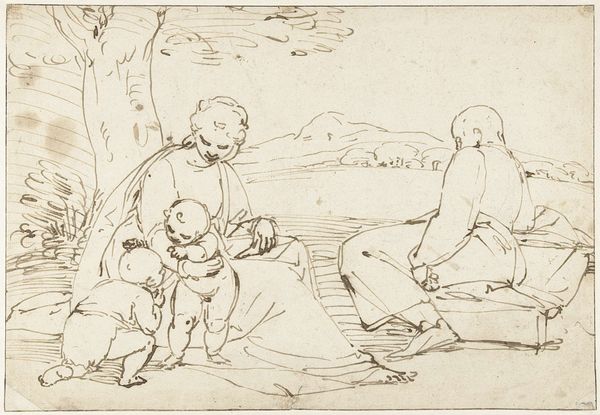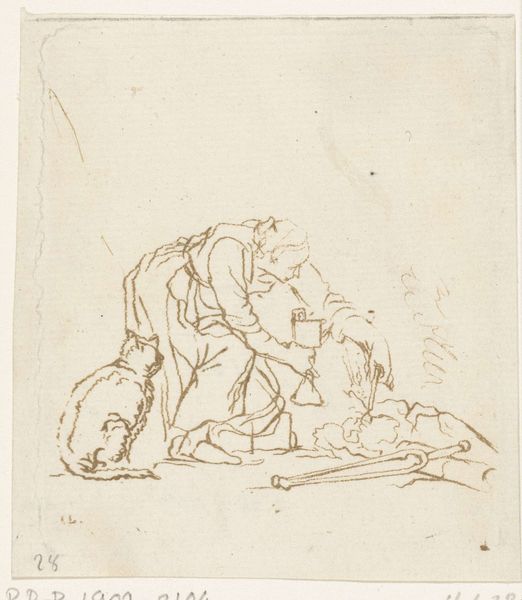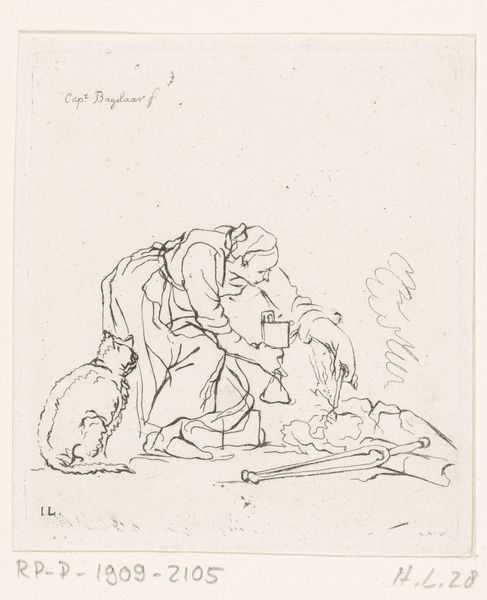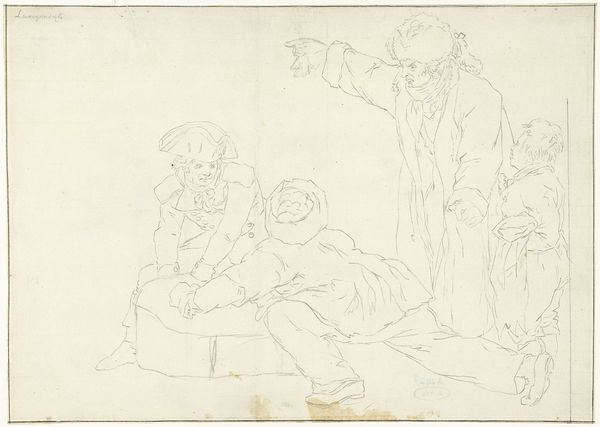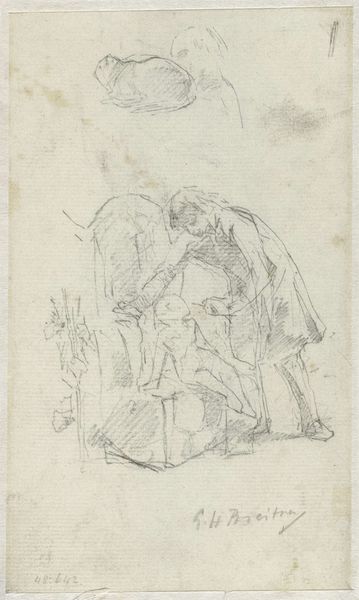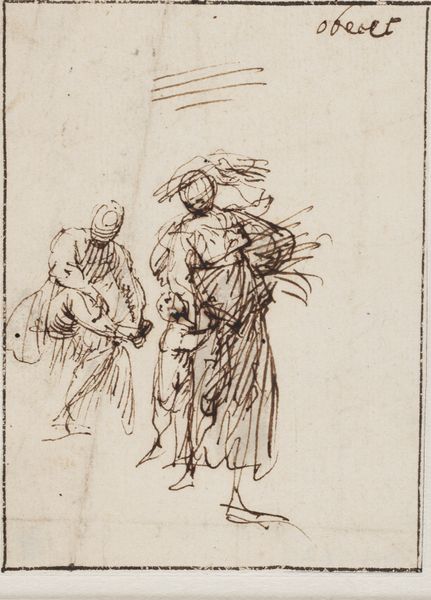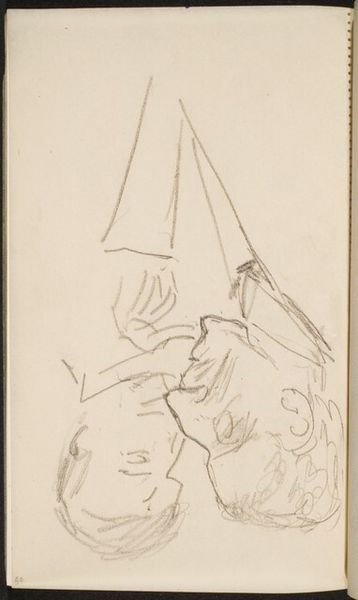
drawing, paper, ink
#
drawing
#
narrative-art
#
baroque
#
figuration
#
paper
#
ink
Dimensions: height 218 mm, width 178 mm
Copyright: Rijks Museum: Open Domain
Editor: Here we have Willem Drost’s “Tobias and the Angel with the Fish,” created around 1650 to 1655 using ink on paper. The loose lines create such a sense of movement, and the figures have a weighty, almost sculptural feel despite the medium. What can you tell me about this piece? Curator: Considering Drost's "Tobias," I'm drawn to the act of production itself. Notice the deliberate use of ink— a readily available, relatively inexpensive material. What does it mean to depict a biblical narrative using such humble means? How does the artist’s choice democratize a traditionally elite subject? Editor: That's a really interesting point. It does seem to bring the story down to earth. But doesn't the narrative still carry significant weight, regardless of the material? Curator: Precisely! The narrative *is* the key, but the ink isn’t separate from its status or role within 17th century economics. By choosing ink, Drost situates this sacred event within a specific social reality—one where access to materials shapes the representation of even the most divine moments. Think about the labor involved; how long did it take him to learn his skills with ink making? Is there any evidence the workshop collaborated with the artist in question? Editor: So, you’re saying the *way* the story is told is just as important as the story itself in terms of its accessibility and meaning. The materials become a filter. Curator: Absolutely. The material itself carries its own history of labor, consumption, and access. Consider the role of paper production at this time and where he might have gotten his supplies. These were highly valuable assets to his work and cannot be denied as a foundation for meaning. By focusing on the materials and production, we see this drawing as more than just a biblical scene; it's a tangible object with its own social and economic context. Editor: That's given me a lot to think about. I hadn't considered how the humble nature of the materials impacts the artwork’s message and reception. Thanks for illuminating that! Curator: And thank you for seeing the value in a fresh perspective. Looking closely at process gives a voice to artistic value.
Comments
No comments
Be the first to comment and join the conversation on the ultimate creative platform.
